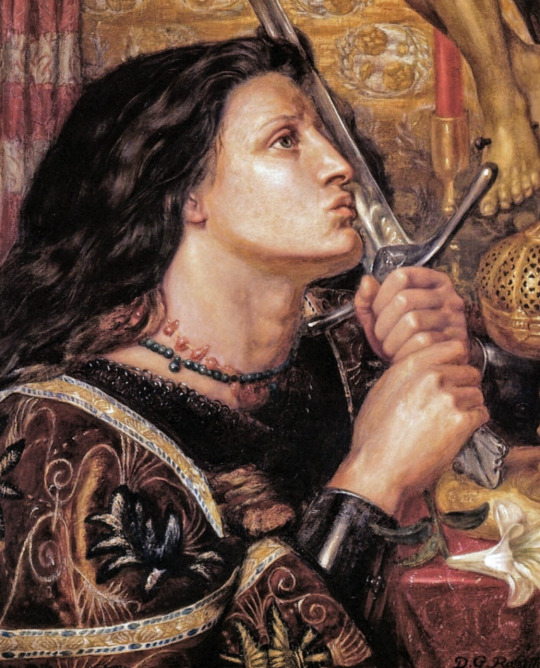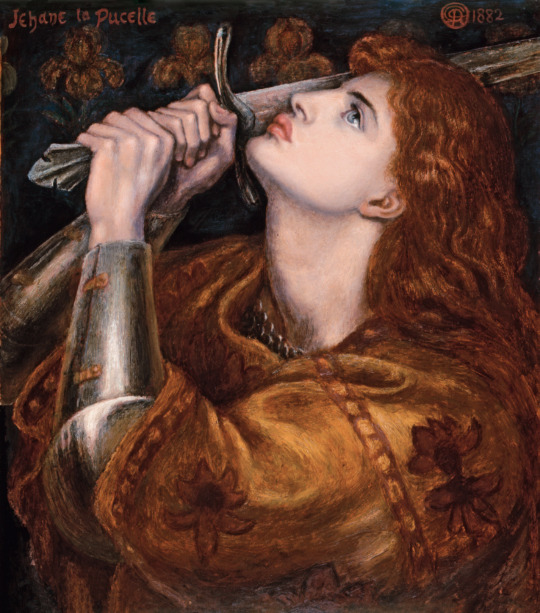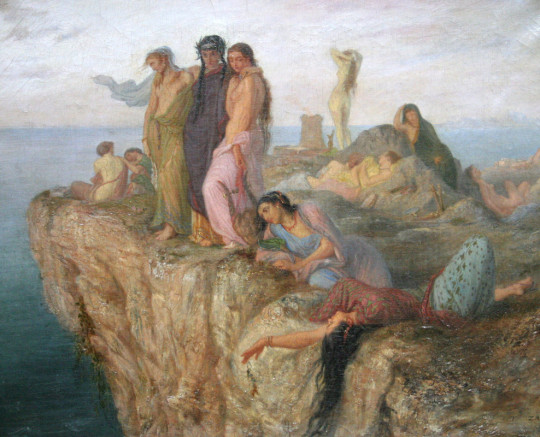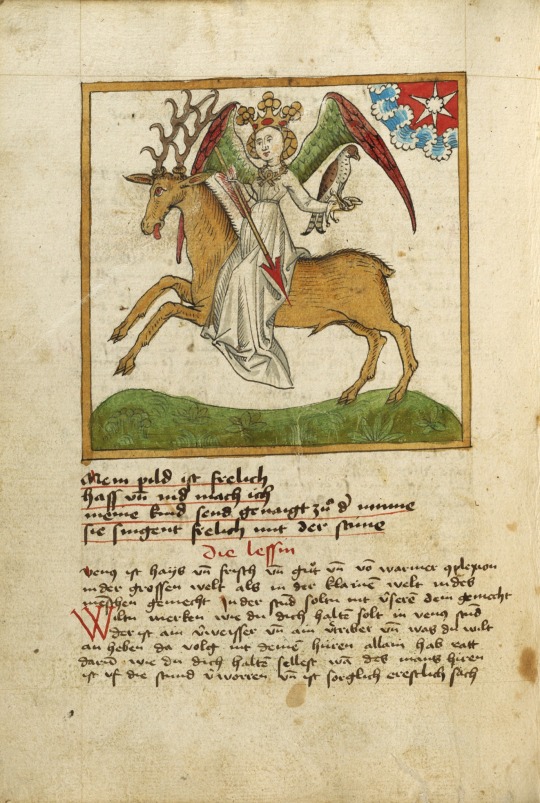#christianity and women's history
Text
Rounding out the Roman aspect of women's history with Hypatia and Theodora:
Hypatia and Theodora are the last Romans I will be discussing today, and both of them represent two faces of the change from the pagan to the Christian world. Hypatia is most famous as a case of willful murder incited by a hero of the Christian Church who saw her as an image of everything he hated. She was also a distinct exception much like Sappho to a general trend and suffered from the Wu Zhao phenomenon with an extra vengeance, in that what men do and is considered unexceptional becomes exceptionally heinous when women do it.
Christian leaders like Cyril of Alexandra didn't exactly love men as pagan philosophers either but they were less willing to incite their murders than they were with say, Hypatia.
#lightdancer comments on history#women's history month#ancient rome and women's history#christianity and women's history#hypatia of alexandria
3 notes
·
View notes
Text


Dante Gabriel Rossetti
British, 1828-1882
Joan of Arc Kissing the Sword of Deliverance (1863) & Joan of Arc (1882)
#art#painting#classical art#art detail#joan of arc#art history#women in art#women in history#historical art#19th century art#British art#preraphaelites#pre raphaelite brotherhood#pre raphaelite#dante gabriel rossetti#rossetti#jeanne d'arc#christian art#dark academia#dark academia aesthetic#dark academia art#paintings#victorian art#19th century
4K notes
·
View notes
Text

Antoine-Christian Zacharie called Tony Zac – Female Companions of Sappho (ca. 1868)
#art#art history#antoine-christian zacharie#tony zac#austrian#lesbian#lesbian art#wlw#women#fine art#oil#oil on canvas#sappho#painting#sapphic#XIXth century#19th century#female homosexuality
410 notes
·
View notes
Note
Yo, I saw your post about orientalism in relation to the "hollywood middle-east" tiktok!
How can a rando and university dropout get into and learn more about? Any literature or other content to recommend?
Hi!! Wow, you have no idea how you just pressed a button. I'll unleash 5+ years on you. And I'll even add for you open-sourced works that you can access as much as I can!
1. Videos
I often find this is the best medium nowadays to learn anything! I'll share with you some of the best that deal with the topic in different frames
• This is a video of Edward Said talking about his book, Orientalism. Said is the Palestinian- American critic who first introduced the term Orientalism, and is the father of postcolonial studies as a critical literary theory. In this book, you’ll find an in-depth analysis of the concept and a deconstruction of western stereotypes. It’s very simple and he explains everything in a very easy manner.
• How Islam Saved Western Civilization. A more than brilliant lecture by Professor Roy Casagranda. This, in my opinion, is one of the best lectures that gives credit to this great civilization, and takes you on a journey to understand where did it all start from.
• What’s better than a well-researched, general overview Crash Course about Islam by John Green? This is not necessarily on orientalism but for people to know more about the fundamental basis of Islam and its pillars. I love the whole playlist that they have done about the religion, so definitely refer to it if you're looking to understand more about the historical background! Also, I can’t possibly mention this Crash Course series without mentioning ... ↓
• The Medieval Islamicate World. Arguably my favourite CC video of all times. Hank Green gives you a great thorough depiction of the Islamic civilization when it rose. He also discusses the scientific and literary advancements that happened in that age, which most people have no clue about! And honestly, just his excitement while explaining the astrolabe. These two truly enlightened so many people with the videos they've made. Thanks, @sizzlingsandwichperfection-blog
2. Documentaries
• This is an AMAZING documentary called Reel Bad Arabs: How Hollywood Villifies A People by the genius American media critic Jack Shaheen. He literally analysed more than 1000 movies and handpicked some to showcase the terribly false stereotypes in western depiction of Arab/Muslim cultures. It's the best way to go into the subject, because you'll find him analysing works you're familiar with like Aladdin and all sorts.
• Spain’s Islamic Legacy. I cannot let this opportunity go to waste since one of my main scopes is studying feminist Andalusian history. There are literal gems to be known about this period of time, when religious coexistence is documented to have actually existed. This documentary offers a needed break from eurocentric perspectives, a great bird-view of the Islamic civilization in Europe and its remaining legacy (that western history tries so hard to erase).
• When the Moors Ruled in Europe. This is one of the richest documentaries that covers most of the veiled history of Al-Andalus (Muslim Spain). Bettany Hughes discusses some of the prominent rulers, the brilliance of architecture in the Arab Muslim world, their originality and contributions to poetry and music, their innovative inventions and scientific development, and lastly, La Reconquista; the eventual fall and erasure of this grand civilization by western rulers.
3. Books
• Rethinking Orientalism by Reina Lewis. Lewis brilliantly breaks the prevailing stereotype of the “Harem”, yk, this stupid thought westerns projected about arab women being shut inside one room, not allowed to go anywhere from it, enslaved and without liberty, just left there for the sexual desires of the male figures, subjugated and silenced. It's a great read because it also takes the account of five different women living in the middle east.
• Nocturnal Poetics by Ferial Ghazoul. A great comparative text to understand the influence and outreach of The Thousand and One Nights. She applies a modern critical methodology to explore this classic literary masterpiece.
• The Question of Palestine by Edward Said. Since it's absolutely relevant, this is a great book if you're looking to understand more about the Palestinian situation and a great way to actually see the perspective of Palestinians themselves, not what we think they think.
• Arab-American Women's Writing and Performance by S.S. Sabry. One of my favourite feminist dealings with the idea of the orient and how western depictions demeaned arab women by objectifying them and degrading them to objects of sexual desire, like Scheherazade's characterization: how she was made into a sensual seducer, but not the literate, brilliantly smart woman of wisdom she was in the eastern retellings. The book also discusses the idea of identity and people who live on the hyphen (between two cultures), which is a very crucial aspect to understand arabs who are born/living in western countries.
• The Story of the Moors in Spain by Stanley Lane-Poole. This is a great book if you're trying to understand the influence of Islamic culture on Europe. It debunks this idea that Muslims are senseless, barbaric people who needed "civilizing" and instead showcases their brilliant civilization that was much advanced than any of Europe in the time Europe was labelled by the Dark Ages. (btw, did you know that arabic was the language of knowledge at that time? Because anyone who was looking to study advanced sciences, maths, philosophy, astronomy etc, had to know arabic because arabic-speaking countries were the center of knowledge and scientific advancements. Insane, right!)
• Convivencia and Medieval Spain. This is a collection of essays that delve further into the idea of “Convivencia”, which is what we call for religious coexistence. There's one essay in particular that's great called Were Women Part of Convivencia? which debunks all false western stereotypical images of women being less in Islamic belief. It also highlights how arab women have always been extremely cultured and literate. (They practiced medicine, studied their desired subjects, were writers of poetry and prose when women in Europe couldn't even keep their surnames when they married.)
4. Novels / Epistolaries
• Granada by Radwa Ashour. This is one of my favourite novels of all time, because Ashour brilliantly showcases Andalusian history and documents the injustices and massacres that happened to Muslims then. It covers the cultural erasure of Granada, and is also a story of human connection and beautiful family dynamics that utterly touches your soul.
• Dreams of Trespass by Fatema Mernissi. This is wonderful short read written in autobiographical form. It deconstructs the idea of the Harem in a postcolonial feminist lens of the French colonization of Morocco.
• Scheherazade Goes West by Mernissi. Mernissi brilliantly showcases the sexualisation of female figures by western depictions. It's very telling, really, and a very important reference to understand how the west often depicts middle-eastern women by boxing them into either the erotic, sensual beings or the oppressed, black-veiled beings. It helps you understand the actual real image of arab women out there (who are not just muslims btw; christian, jew, atheist, etc women do exist, and they do count).
• Letters of Lady Mary Wortley Montagu. This is a feminist travel epistolary of a British woman which covers the misconceptions that western people, (specifically male travelers) had recorded and transmitted about the religion, traditions and treatment of women in Constantinople, Turkey. It is also a very insightful sapphic text that explores her own engagement with women there, which debunks the idea that there are no queer people in the middle east.
---------------------
With all of these, you'll get an insight about the real arab / islamic world. Not the one of fanaticism and barbarity that is often mediated, but the actual one that is based on the fundamental essences of peace, love, and acceptance.
#orientalism#literature#arab#middle east#islam#feminism#book recommendations#reference#documentary#western stereotypes#eurocentrism#queer#queer studies#gender studies#women studies#cultural studies#history#christianity#judaism#books#regulusrules recs#If you need more recs#or can’t access certain references#feel free to message me and I’ll help you out!#regulusrules answers
113 notes
·
View notes
Text

Christian Dirce by Henryk Siemiradzki
#henryk siemiradzki#art#nero#emperor#christian#dirce#ancient rome#roman empire#roman#romans#antiquity#martyr#martyrs#greek mythology#euripides#bull#horns#women#reenactment#queen of thebes#enactments#history#europe#european#entourage#lictors#fasces#architecture#rome
94 notes
·
View notes
Text

Christian Schad
29 notes
·
View notes
Text

Madeleine (1883) by Christian Krohg. Lillehammer Art Museum.
#christian krohg#lillehammer art museum#lillehammer#norway#norwegian art#norwegian artist#norwegian painter#art#oil on board#painting#scandinavia#scandinavian artist#norwegen#norge#female portrait#female portrayal#19th century art#19th century#19th century aesthetics#1880s#late 1800s#late 19th century#europe#european art#europa#northern europe#art history#madeleine#scandinavian art#women in art
40 notes
·
View notes
Text

Venus Riding a Stag
Unknown artist, ca 1464
Watercolor and Ink
Germany
#religious art#art history#art#history#european art#medieval#medieval art#christian art#middle ages#women in history#Venus#Venus deity#planets#astrology#zodiacs#Taurus#medieval manuscripts#illuminated manuscript
183 notes
·
View notes
Text

A long time ago, there was a woman named Mary Magdalene. Possessed by 7 demons, Jesus christ purified her soul and deemed her his most beloved. Magdalena was the most blessed woman, an apostle to the apostles who envied her… Over the ages, humans grew bitter, jealous and refused this love. They decided to rewrite her as a promiscuous prostitute.

#art#jesus christ#mary magdalene#history#religion#christianity#paintings#short story#love#love story#relationship#women#feminism
55 notes
·
View notes
Text
Jezebel is the gateway to feminist reconstructing of the past to many people:
Then there's Jezebel, whose role as the demonized woman is so classical there's a feminist website named after her precisely for this reason. She is the usual introduction and gateway to how feminists read texts and to the Wu Zhao phenomenon of how the powerful woman who rules instead of reigning in the most ancient sources is subject to particular demonization.
I compare her to Empress Wu and not Messalina because there's no sexual motif with her besides the influence over her husband. She was a worshiper of the Canaanite pantheon and a successful example of absolutism in practice. The Bible doesn't even like the male kings of Israel and the Talmud extends this to Emperors of Rome and Sassanian and Parthian Iran. Women who ruled and exercised that power get it ten times worse, and Jezebel is the most infamous example of this.
She becomes a motif to Christianity as the 'Jezebel Spirit' and this takes all the motifs of Talmudic thought that the early Church imported from Second Temple Judaism and makes it a hundred times worse, amplified by the Christian rule that 'women shall not have authority over men' (which doesn't have a direct parallel in Judaism but the Talmud is not kind to women who exercised power regardless).
And of course the reality is that Jezebel WAS a ruthless absolutist because all rulers of the era were absolutist. What people could (very grudgingly, if that) accept under men they treated as the worst nightmare ever in the hands of women.
#lightdancer comments on history#women's history month#the bible and women's history#christianity and women's history#judaism and women's history#jezebel
6 notes
·
View notes
Text

Portrait of Schema-Nun,Kashin (early 20th centery)
#Россия#Russia#vintage#photography#Кашин#Kashin#Христианство#Christianity#Православие#Orthodoxy#religion#christian#portait#Schema-Nun#nun#religious#woman#beauty#nuns#russian#Eastern Europe#women#traditional#photo#Europe#history#black and white#vintage photography#20th centery
45 notes
·
View notes
Text

Lee Radziwill sits next to Diana Vreeland at a Christian Dior fashion show. 1962.
#lee radziwill#diana vreeland#christian dior#american vintage#iconic women#vintage beauty#1960s#60s#1960s fashion#1960s women#60s aesthetic#60s fashion#60s 70s 80s 90s#60s glamour#60s hair#60s photography#60s vintage#60s style#1960s aesthetic#1960s hair#1960s history#1960s vintage#high society#high fashion#vogue beauty#beautiful women#style icon#fashion icon#vintage americana#vintage women
24 notes
·
View notes
Text
I begin my PhD at the end of the month and will be doing a Lot of reading on medieval religious women, ascetic practices and affective meditation, bioarchaeology, & on philosophy (both medieval & modern) surrounding pain, suffering, sensation, and sadomasochism. I think I might post recommendations and links to articles, etc. if folks might be interested(?). I'm very pro knowledge sharing and free education, so if you're at all interested, feel free to pop me a message and I can keep an eye out for articles that might specifically interest you.💞
#academic#phd#studyblr#philosophy#history#education#medieval#medieval women#medieval christianity#bioarchaeology#archaeology#asceticism#ascetic practices#affective meditation#nun#nuns#anchorites#anchoresses#anchorhold#cloister#suffering#pain#sensation#medieval religion#medievalist#medieval history#medieval philosophy
10 notes
·
View notes
Text




#astronomy#astro community#women in stem#science#medieval#christianity#academia#dark academia#astrophysics#physics#science history#history
9 notes
·
View notes
Text

Bunny (Linnea Eleanor) Yeager (1929-2014, USA). Self Portrait.
The Assumption of the Virgin, circa 1611-1612. Peter Paul Rubens (Flemish, 1577-1640). Royal Collection, Windsor Castle, Berkshire, England.
#fangledeities#bunny yeager#pinup art#pin ups#pin up model#peter paul rubens#flemish art#flemish painting#assumption of the virgin#baroque#baroque art#bvm#art history#sacred art#christian art#religious art#women photographers#pinup artist#art h
18 notes
·
View notes
Text
https://youtu.be/ajst_f34ymc The Worship Celebration.
I had the Honor of Being Crucifer during the 50th anniversary for the Philadelphia Eleven.

https://www.philadelphiaelevenfilm.com/
I am Honored to have been in the position in which Barbara Harris was during the Celebration. Who would later become the first woman of color to ever become a bishop, and the first woman bishop ever in the episcopal church. (My B.day Saint is also St.Barbara the martyr. Take that as you will.)

(Episcopal Bishop Barbara Harris)
I'm a trans woman. This was very poignant to me. As Barbara was the odd one out during the ordination. Till her time for service came later.
Without women Priests in the church I would have given up faith in Christ Jesus. I had been so hurt by in the past. I have been through several severely bad mental health drops recently too.
I needed these women, I needed their wisdom, their kindness, their love. Their bravery and strength. I want to be just like them.
If that means, becoming a nun, or a deacon? I dont know.
I want Gods will for me. But I want to be an advocate for transgender welfare and civil liberties. Or atleast helping my trans siblings somehow.
After Putting on robes and walking to the narthex, I was told by the Provost that "The white vestment suits me." He said something indicating the feeling of me becoming clergy or some part of the church. This was a powerful indication to me. That Maybe all of these comments mean something.
But one of the little old lady priests there. (Many of whom were cute little old gay ladies <3) Told me this. "Sometimes God works through your neighbors, you just gotta listen, sometimes hes telling you something." I had told her all of my neighbors keep asking me to become clergy.
As I walked in the procession I felt like for the first time in my life I found purpose. Looking up at the stain glass I realized. That I wanted to become part of the church somehow in some way. I wept a bit during this time facing away from the congregation holding up the cross. This place was warm. It was good. God is here with us.
This was a point where I wanted to commit to Christ more then I already had been.
Later after the eucharist.
I was asked to become an acolyte by Mom Siri.
this was in the side chapel.

I cried in her arms. I was so joyful, and sad, and grateful. She caressed my head like a mother. I have severe trauma from not having a loving mom growing up due to divorce. So I really follow her around like a chick gathered to a hen.
She knows this and she calls me her "Favorite person." So clearly Mom Siri sees something in me. I have a complex that due to my trans status I would be refused position in the church. But this was what I needed to hear. Just typing this out makes me cry.
I was weeping not only was one of my favorite songs playing.
"I want to walk as a child of the Light", I feel unworthy of the gifts God keeps giving me.
I'm not a saint, I'm not pure, yet Abba, Jesus, Holy Ghost keeps giving me these gifts. Which I cannot thank enough.
I know that I will be inconsolable when Mother Siri reposes someday.
But I want to be Just like her a person of absolute LOVE.
Christ has died
Christ is Risen
Christ will come again
#episcopalian#feminism#civil rights#lgbt#lgbt christian#queer religion#queer christian#christianity#catholic#episcopal#progressive christianity#womens history#queer christianity#queer faith#liberation gospel#minneapolis#christian faith#faith in jesus#transgender#love
14 notes
·
View notes